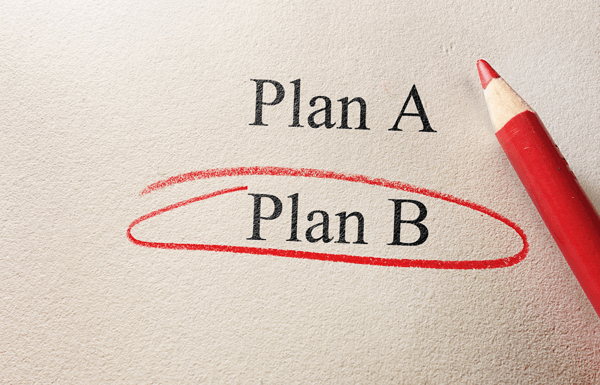How to Combat an Unsuccessful Black Friday

According to the NRF, 69 percent of Americans - or roughly 164 million people - planned to shop this past Thanksgiving weekend to take advantage of the sales. The survey also found that of all the shopping days during the long holiday weekend, Black Friday was projected to be the busiest day, with 70 percent (115 million) planning to shop on that day. After the fact, a record $5.03 billion was spent by the end of Black Friday.
For marketers and retailers, these statistics should come as no surprise. The holiday shopping season is considered the crux of every retail brand's annual revenue, which makes monitoring for trends on buyer behaviors leading up to the season kick-off crucial. With data on industry predictions and a strategy to target both existing and new customers, retailers should have been able to turn Black Friday goals into quantifiable results.
And yet, that sometimes isn't the case. Even with all the statistics in the world and creative, personalized campaigns, some retailers will inevitably fall short of hitting their metrics during the biggest shopping weekend of the year. Unfortunately, Black Friday sales are considered an early predictor of overall holiday season performance, making it even more of a detriment when things don't go as planned.
For brands that struggled to hit their Black Friday sales, there's still hope for turning the rest of the holiday season around. Here's how marketers and retailers who are in need of a "Plan B" for holiday success can stay on track and compete during the busiest time of year.

Remain committed to customers
Every day and every sale are critical at this point in the holiday season, and brands that fail to keep the interests of their customers in mind are making a huge mistake. Although cliché, "the customer knows best" is a timeless expression every successful marketer and retailer knows. If a brand did not hit the sales metrics it expected to this past Black Friday, the first place they should look is to customer service. Are the service reps being flexible to meet customer needs? Are they offering a variety of options when needed?
If not, a retailer should take a hard look into the best practices they're employing when addressing customer needs. For example, if a product is out of stock or being ordered too late to be received in time for the holiday, a brand should offer a comparable substitute or a gift card. If inclement weather may delay shipments, customer expectations should be appropriately set well in advance in order to minimize the negative impact of under delivering.
Implementing a customer-centric approach that includes personalized offerings not only sets retailers apart from the pack, but can also ensure brand loyalty from returning and new customers - a success metric that can take a brand's holiday sales to the next level.
Measure success in real-time
Brands that aren't measuring the success of their promotions continuously throughout the holiday season are missing out on mission-critical information. Many times, brands will issue multiple versions of the same promotion - whether the artwork is different, the copy is slightly updated, or the size has been altered to fit a variety of devices, screens, and platforms. Having a program in place that can track the metrics associated with each version of every promotion and update the content in real-time can make a huge difference in the way a retailer markets its holiday deals.
Such metrics include open rates, conversion rates, bounce rates, etc. - all of which would give a marketer insight into which promotions are the most successful and which aren't hitting the mark. Bounce rates are particularly crucial when measuring the success of promotions with new customers - who more frequently appear during the holidays than any other time of year. If a brand sees abnormally high bounces among new customers, that's a clear indication that the content is need of an update.
Thankfully, with the correct software in place, brands can easily update content across platforms and devices whenever products sell out or promotions need boosts. With such a platform, brands will be able to ensure the best and most up to date versions of promotions are getting in front of as many of their target shoppers as possible for the rest of the holiday season.
Ramp up sales urgency
As the final weeks of the holiday season creep up, brands that have still not met their sales goals need to start reworking their communication strategies. Setting up timers that count down to the holidays is one tactic for creating a sense of urgency among buyers. Others are more customer-centric, such as offering flexible return policies to convert a full shopping cart into a purchase, or cutting the costs of expedited shipping to encourage last-minute buys.
While every retailer's strategy for holiday sales success may differ, it's important that they have a back-up plan in place if they did not meet their goals on Black Friday. With an eye toward customer satisfaction, software that can track and update promotions, and an effective communication strategy in place, those that struggled to find success at the start of the holiday shopping season should be able to turn their sales around for the remainder of the year.
About the Author
With 20-plus years of experience, Brett Bair is an expert in optimization, personalization and digital merchandising. As Monetate's Principal Strategist, Brett helps businesses create the best possible digital customer experiences.







